


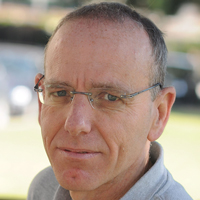
Ronen Alon
Weizmann Institute of Science
Rehovot, Israel
 Ronen Alon earned his PhD in biophysics at the Weizmann Institute of Science in 1993. For the next several years, he worked as a research fellow at Harvard Medical School's Center for Blood Research under the supervision of Dr. Tim Springer. In 1996, he joined the Weizmann Institute’s Department of Immunology. He is a full professor and the incumbent of the Linda Jacobs Professorial Chair in Immune and Stem Cell Research. Prof. Alon investigates the mechanisms by which white blood cells exit blood vessels at specific sites of inflammation and injury with specific interest in how chemokines and integrin adhesion molecules promote leukocyte crossing of distinct endothelial barriers. He was among the first to propose that integrin adhesiveness and the transendothelial migratory potential of lymphocytes are facilitated by shear forces. Recently, he has become interested in how the endothelial cytoskeleton is remodeled by extravasating immune cells and how metastatic cells use helper immune cells to promote their extravasation in various target organs. He has published more than 130 papers and reviews. Prof. Alon served as the president of the Israeli Immunological Society and is a member of several ethical and promotion committees in his institute. He also serves on scientific advisory boards. In 2012 he was elected as a member of EMBO.
Ronen Alon earned his PhD in biophysics at the Weizmann Institute of Science in 1993. For the next several years, he worked as a research fellow at Harvard Medical School's Center for Blood Research under the supervision of Dr. Tim Springer. In 1996, he joined the Weizmann Institute’s Department of Immunology. He is a full professor and the incumbent of the Linda Jacobs Professorial Chair in Immune and Stem Cell Research. Prof. Alon investigates the mechanisms by which white blood cells exit blood vessels at specific sites of inflammation and injury with specific interest in how chemokines and integrin adhesion molecules promote leukocyte crossing of distinct endothelial barriers. He was among the first to propose that integrin adhesiveness and the transendothelial migratory potential of lymphocytes are facilitated by shear forces. Recently, he has become interested in how the endothelial cytoskeleton is remodeled by extravasating immune cells and how metastatic cells use helper immune cells to promote their extravasation in various target organs. He has published more than 130 papers and reviews. Prof. Alon served as the president of the Israeli Immunological Society and is a member of several ethical and promotion committees in his institute. He also serves on scientific advisory boards. In 2012 he was elected as a member of EMBO.
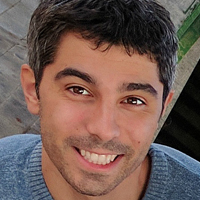
Davide Cacchiarelli
Telethon Institute of Genetics and Medicine (TIGEM)
Pozzuoli, NA, Italy
 Davide Cacchiarelli, Ph.D., is an Assistant Telethon Investigator at the Telethon Institute of Genetics and Medicine. He obtained his Master and Doctorate in Genetics and Molecular Biology from Sapienza University of Rome. He applies Integrative Genomics to investigate cell fate decisions during differentiation and reprogramming processes. He developed cellular models to dissect reprogramming to pluripotency and algorithms for the analysis of single cell genomics. He was awarded in 2017 of the Armenise/Harvard Career Development Award.
Davide Cacchiarelli, Ph.D., is an Assistant Telethon Investigator at the Telethon Institute of Genetics and Medicine. He obtained his Master and Doctorate in Genetics and Molecular Biology from Sapienza University of Rome. He applies Integrative Genomics to investigate cell fate decisions during differentiation and reprogramming processes. He developed cellular models to dissect reprogramming to pluripotency and algorithms for the analysis of single cell genomics. He was awarded in 2017 of the Armenise/Harvard Career Development Award.
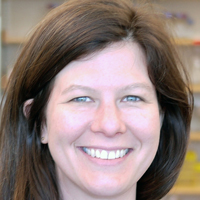
Stirling Churchman
Harvard Medical School
Boston, MA, USA
 Stirling Churchman, Ph.D. is an Assistant Professor in the Department of Genetics at Harvard Medical School. Using high-resolution quantitative genome-wide approaches, her laboratory investigates how gene expression is regulated from both the nuclear and mitochondrial genomes. In particular, her lab has developed native elongation transcript sequencing, NET-seq, that directly visualizes global transcriptional activity through mapping RNA polymerase density genome-wide with single-nucleotide resolution. Dr. Churchman majored in physics at Cornell University and obtained her doctorate in physics from Stanford University in 2008. Dr. Churchman joined the Genetics Department at Harvard Medical School as an Assistant Professor in 2011. She is also an Associate Member of the Broad Institute of Harvard and MIT. Dr. Churchman received the Dale F. Frey Award for Breakthrough Scientists by the Damon Runyon Cancer Research Foundation (2011), a Burroughs Wellcome Fund Career Award at the Scientific Interface (2011-2016) and the Glenn Award for Research in Biological Mechanisms of Aging (2016).
Stirling Churchman, Ph.D. is an Assistant Professor in the Department of Genetics at Harvard Medical School. Using high-resolution quantitative genome-wide approaches, her laboratory investigates how gene expression is regulated from both the nuclear and mitochondrial genomes. In particular, her lab has developed native elongation transcript sequencing, NET-seq, that directly visualizes global transcriptional activity through mapping RNA polymerase density genome-wide with single-nucleotide resolution. Dr. Churchman majored in physics at Cornell University and obtained her doctorate in physics from Stanford University in 2008. Dr. Churchman joined the Genetics Department at Harvard Medical School as an Assistant Professor in 2011. She is also an Associate Member of the Broad Institute of Harvard and MIT. Dr. Churchman received the Dale F. Frey Award for Breakthrough Scientists by the Damon Runyon Cancer Research Foundation (2011), a Burroughs Wellcome Fund Career Award at the Scientific Interface (2011-2016) and the Glenn Award for Research in Biological Mechanisms of Aging (2016).
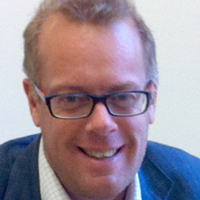
Nicola Elvassore
Dept of Industrial Engineering, University of Padua
Padua, Italy
 Dr. Nicola Elvassore is Associate Professor (since 2014) at the Department of Industrial Engineering at University of Padova, Italy; Professorial Research Associate (since 2015) at the Faculty of Pop Health Sciences, Centre for Stem Cells & Regenerative Medicine of the University College London, UK. He is furthermore Principal Investigator (since 2007) at the Venetian Institute of Molecular Medicine, Padova, Italy and Distinguished Professor-in-Residency (since 2015) at Shanghai Institute of Advanced Immunochemistry (SIAIS) of ShanghaiTech University, Shanghai, China. His work focuses on the area of stem cell engineering. He is constantly developing micro-technologies to investigate, decipher and dissected the extrinsic networks of endogenous signals that are self-established during cellular reprogramming and programming. He is applying engineering principles to control the 3D self-arrangement ability of pluripotent stem cell toward tissues or organs to model human disease and predict patient-specific pathological outcomes. By coupling large-scale multiplex experimental platforms, he aims to investigate how individual heterogeneity combined with environmental signals, oscillatory in nature by definition, defines pathological onsets. His publication list includes over 90 papers published as articles in peer-review journals like Nature, Nature Methods and Cell.
Dr. Nicola Elvassore is Associate Professor (since 2014) at the Department of Industrial Engineering at University of Padova, Italy; Professorial Research Associate (since 2015) at the Faculty of Pop Health Sciences, Centre for Stem Cells & Regenerative Medicine of the University College London, UK. He is furthermore Principal Investigator (since 2007) at the Venetian Institute of Molecular Medicine, Padova, Italy and Distinguished Professor-in-Residency (since 2015) at Shanghai Institute of Advanced Immunochemistry (SIAIS) of ShanghaiTech University, Shanghai, China. His work focuses on the area of stem cell engineering. He is constantly developing micro-technologies to investigate, decipher and dissected the extrinsic networks of endogenous signals that are self-established during cellular reprogramming and programming. He is applying engineering principles to control the 3D self-arrangement ability of pluripotent stem cell toward tissues or organs to model human disease and predict patient-specific pathological outcomes. By coupling large-scale multiplex experimental platforms, he aims to investigate how individual heterogeneity combined with environmental signals, oscillatory in nature by definition, defines pathological onsets. His publication list includes over 90 papers published as articles in peer-review journals like Nature, Nature Methods and Cell.
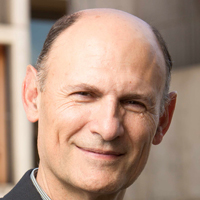
Juan Carlos Izpisua Belmonte
Salk Institute for Biological Studies
La Jolla, CA, USA
 Juan Carlos Izpisua Belmonte obtained his pharmacology degree at the University of Valencia, and a Ph.D. at Universities of Bologna and Valencia. He conducted postdoctoral studies at the EMBL, Heidelberg and UCLA in Los Angeles. He has been at the Salk Institute for Biological Studies since 1993. Izpisua Belmonte is interested in elucidating the cellular and molecular basis of embryonic development as well as in tissue/organ regeneration. His early work helped to understand fundamental genetic and cellular principles that govern vertebrate development and tissue and organ regeneration. They constituted the basis from where he has developed discoveries and new methodologies for regenerative medicine.
Juan Carlos Izpisua Belmonte obtained his pharmacology degree at the University of Valencia, and a Ph.D. at Universities of Bologna and Valencia. He conducted postdoctoral studies at the EMBL, Heidelberg and UCLA in Los Angeles. He has been at the Salk Institute for Biological Studies since 1993. Izpisua Belmonte is interested in elucidating the cellular and molecular basis of embryonic development as well as in tissue/organ regeneration. His early work helped to understand fundamental genetic and cellular principles that govern vertebrate development and tissue and organ regeneration. They constituted the basis from where he has developed discoveries and new methodologies for regenerative medicine.
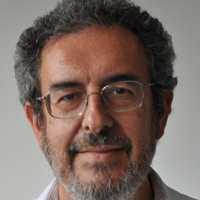
Alberto Luini
Institute of Protein Biochemistry, IBP-CNR
Naples, Italy
 Alberto Luini graduated in Medicine in Milan and then spent long periods at the Weizmann Institute (Israel) and the NIH (US) before returning to Italy, now at the IBP-CNR in Naples. He is a member of the EMBO and the Academia Europaea, and serves or has served in many institutional bodies including the EMBL Technical Advisory Committee, the ERC Advanced Panel, and the EuroBioimaging Governing Board.
Alberto Luini has worked in different biology areas including drug metabolism, neuroscience and, more recently, the cell biology of membrane transport and signal transduction. His achievements in this field include: the demonstration of the cisternal progression-conversion mechanism of intra-Golgi transport (Cell, 1998); the development of modern correlative video-electron microscopy (CLEM) (JCB, 2000); the demonstration by CLEM of a large class of pleiomorphic tubular carriers operating in membrane transport (Nature Cell Biol., 2004); the analysis of a novel mechanism of membrane fission (Nature, 1999); and, more relevant to this meeting, the demonstration that what was earlier called constitutive traffic is in fact regulated by signaling cascades. Along this line, he has identified autoregulatory mechanisms that sense and control membrane and cargo fluxes through signaling and transcriptional networks to maintain safe/optimal function of the transport apparatus (key papers: Nature 1993, Nature Cell Biol., 2008; Dev. Cell, 2014), and to coordinate transport with other cellular modules.
Alberto Luini graduated in Medicine in Milan and then spent long periods at the Weizmann Institute (Israel) and the NIH (US) before returning to Italy, now at the IBP-CNR in Naples. He is a member of the EMBO and the Academia Europaea, and serves or has served in many institutional bodies including the EMBL Technical Advisory Committee, the ERC Advanced Panel, and the EuroBioimaging Governing Board.
Alberto Luini has worked in different biology areas including drug metabolism, neuroscience and, more recently, the cell biology of membrane transport and signal transduction. His achievements in this field include: the demonstration of the cisternal progression-conversion mechanism of intra-Golgi transport (Cell, 1998); the development of modern correlative video-electron microscopy (CLEM) (JCB, 2000); the demonstration by CLEM of a large class of pleiomorphic tubular carriers operating in membrane transport (Nature Cell Biol., 2004); the analysis of a novel mechanism of membrane fission (Nature, 1999); and, more relevant to this meeting, the demonstration that what was earlier called constitutive traffic is in fact regulated by signaling cascades. Along this line, he has identified autoregulatory mechanisms that sense and control membrane and cargo fluxes through signaling and transcriptional networks to maintain safe/optimal function of the transport apparatus (key papers: Nature 1993, Nature Cell Biol., 2008; Dev. Cell, 2014), and to coordinate transport with other cellular modules.
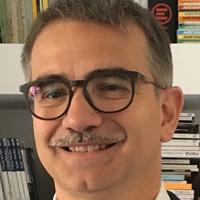
Massimiliano Pagani
University of Milan - INGM
Milan, Italy
 Massimiliano received his degree in Biological Sciences at the University of Milan (1995) and the Ph.D. from the San Raffaele Hospital in Milan (2000). He then worked in the biotech company Primm becoming in 2006 the R&D manager. Since 2008 he joined the National Institute of Molecular Genetics and founded the Integrative Biology program to decipher the molecular mechanisms underlying T cell differentiation and plasticity in the human immune system. Massimiliano has been awarded a Consolidator Grant by the European Research Council and appointed as Professor of Molecular Biology at Università degli Studi di Milano, from January 1st 2015.
Massimiliano received his degree in Biological Sciences at the University of Milan (1995) and the Ph.D. from the San Raffaele Hospital in Milan (2000). He then worked in the biotech company Primm becoming in 2006 the R&D manager. Since 2008 he joined the National Institute of Molecular Genetics and founded the Integrative Biology program to decipher the molecular mechanisms underlying T cell differentiation and plasticity in the human immune system. Massimiliano has been awarded a Consolidator Grant by the European Research Council and appointed as Professor of Molecular Biology at Università degli Studi di Milano, from January 1st 2015.
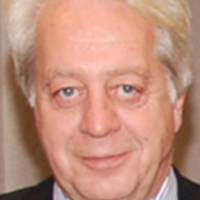
Tullio Pozzan
Dept of Biomedical Sciences, University of Padua
Padua, Italy
 Tullio Pozzan graduated in Medicine in 1973 at the University of Padova, from 1978 to 1981 worked as post doc at the Department of Biochemistry in Cambridge (UK) and was nominated full Professor of General Pathology at the University of Ferrara in 1986. In 1990 he returned to the University of Padova where he served as Department chairman for 12 years. At present Prof. Pozzan is head of the Department of Biomedical Sciences of the National Research Council (CNR). His main scientific interest over the last 30 years has been the study of Ca2+ as a universal intracellular second messenger. His interests in Ca2+ signaling began with the characterization, in isolated organelles, of the mitochondrial Ca2+ homeostatic mechanisms. During the post doc, in collaboration with R.Y. Tsien (Nobel laureate in 2008), he participated to the development of the intracellular trappable fluorescent Ca2+ indicators and using these tools he clarified a number of key questions in cell activation. His research group developed the first genetically encoded probes with selective subcellular localization (targeted aequorins). This new approach lead to a series of novel discoveries on the mechanisms of subcellular Ca2+ handling and in particular to the understanding of how mitochondria participate in cellular Ca2+ handling. His present interests focus on a detailed description of the mechanisms of Ca2+ uptake and release in mitochondria in vivo, on the role of Ca2+ signaling in neuron-glia cross talk and on the role of altered mitochondrial Ca2+ handling in neurodegenerative diseases. Finally over the last years he became interested also in the signaling pathway controlled by the other universal intracellular messenger, cAMP. His group generated the first genetically encoded fluorescent cAMP probe and contributed to establishing the concept of cAMP microdomains. Recently he described the existence and regulation of an autonomous cAMP generation and hydrolysis mechanism within the matrix of mitochondria.
Tullio Pozzan graduated in Medicine in 1973 at the University of Padova, from 1978 to 1981 worked as post doc at the Department of Biochemistry in Cambridge (UK) and was nominated full Professor of General Pathology at the University of Ferrara in 1986. In 1990 he returned to the University of Padova where he served as Department chairman for 12 years. At present Prof. Pozzan is head of the Department of Biomedical Sciences of the National Research Council (CNR). His main scientific interest over the last 30 years has been the study of Ca2+ as a universal intracellular second messenger. His interests in Ca2+ signaling began with the characterization, in isolated organelles, of the mitochondrial Ca2+ homeostatic mechanisms. During the post doc, in collaboration with R.Y. Tsien (Nobel laureate in 2008), he participated to the development of the intracellular trappable fluorescent Ca2+ indicators and using these tools he clarified a number of key questions in cell activation. His research group developed the first genetically encoded probes with selective subcellular localization (targeted aequorins). This new approach lead to a series of novel discoveries on the mechanisms of subcellular Ca2+ handling and in particular to the understanding of how mitochondria participate in cellular Ca2+ handling. His present interests focus on a detailed description of the mechanisms of Ca2+ uptake and release in mitochondria in vivo, on the role of Ca2+ signaling in neuron-glia cross talk and on the role of altered mitochondrial Ca2+ handling in neurodegenerative diseases. Finally over the last years he became interested also in the signaling pathway controlled by the other universal intracellular messenger, cAMP. His group generated the first genetically encoded fluorescent cAMP probe and contributed to establishing the concept of cAMP microdomains. Recently he described the existence and regulation of an autonomous cAMP generation and hydrolysis mechanism within the matrix of mitochondria.
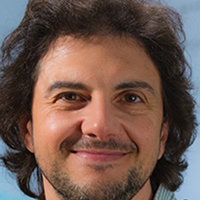
David Sabatini
Massachusetts Institute of Technology
Cambridge, MA, USA
 David Sabatini is a Member of the Whitehead Institute for Biomedical Research, and a
Professor of Biology at the Massachusetts Institute of Technology. He is also an
Investigator of the Howard Hughes Medical Institute, a Senior Associate Member at the
Broad Institute and a member of the Koch Institute for Integrative Cancer Research.
David Sabatini is a Member of the Whitehead Institute for Biomedical Research, and a
Professor of Biology at the Massachusetts Institute of Technology. He is also an
Investigator of the Howard Hughes Medical Institute, a Senior Associate Member at the
Broad Institute and a member of the Koch Institute for Integrative Cancer Research.
David and his lab study the basic mechanisms that regulate cell growth. A major focus of
the lab is the Target of Rapamycin (TOR) pathway, a major regulator of growth in many
eukaryotic species. This has resulted in the identification of many components of the
pathway and to an understanding of their cellular and organismal functions, most of
which have implications for diseases such as cancer and diabetes. David is also interested
in the role of metabolism in cancer and in the mechanisms that control the effects of
dietary restriction on tumorigenesis. Additionally, his lab has developed new
technologies that facilitate the analysis of gene function in mammalian cells.
David received his B.S. from Brown University magna cum laude and his M.D./Ph.D.
from Johns Hopkins University in 1997. David was appointed a Whitehead Fellow later
that year. He became a Member of the Whitehead Institute and Assistant Professor of
Biology at the Massachusetts Institute of Technology in 2002, and received tenure in
2012. David has received a number of awards, some of which are the 2014 NAS Award
in Molecular Biology, and the 2017 Lurie Prize in Biomedical Sciences.
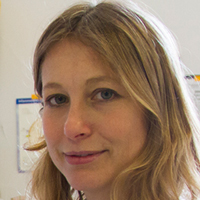
Sara Sigismund
FIRC Institute of Molecular Oncology (IFOM)
Milan, Italy
 Sara Sigismund is a staff scientist at the FIRC Institute of Molecular Oncology (IFOM), Milan, where she leads the endocytosis research team within Prof. Pier Paolo Di Fiore’s group. A long-standing goal of her group is to gain a complete understanding of the role of endocytosis in the regulation of Epidermal Growth Factor Receptor (EGFR) signaling. Through the elucidation of the molecular mechanisms governing ubiquitination and endocytosis of the EGFR, Sara’s work led to the discovery of a novel clathrin-independent mode of EGFR internalization: non-clathrin endocytosis (NCE). This NCE pathway involves contact sites between the endoplasmic reticulum and the plasma membrane that are critical for EGFR internalization in the presence of high ligand concentration. Receptors internalized by NCE are targeted to the lysosomes for degradation leading to signal attenuation. Within the field of endocytosis, Sara’s work has helped establish the concept that the integration of distinct endocytic pathways is critical for determining the final EGFR signaling output. Her current research interests include the elucidation of the functional significance of EGFR-NCE in normal physiological processes and in disease, particularly in cancer. Her work is supported by a Worldwide Cancer Research grant.
Sara Sigismund is a staff scientist at the FIRC Institute of Molecular Oncology (IFOM), Milan, where she leads the endocytosis research team within Prof. Pier Paolo Di Fiore’s group. A long-standing goal of her group is to gain a complete understanding of the role of endocytosis in the regulation of Epidermal Growth Factor Receptor (EGFR) signaling. Through the elucidation of the molecular mechanisms governing ubiquitination and endocytosis of the EGFR, Sara’s work led to the discovery of a novel clathrin-independent mode of EGFR internalization: non-clathrin endocytosis (NCE). This NCE pathway involves contact sites between the endoplasmic reticulum and the plasma membrane that are critical for EGFR internalization in the presence of high ligand concentration. Receptors internalized by NCE are targeted to the lysosomes for degradation leading to signal attenuation. Within the field of endocytosis, Sara’s work has helped establish the concept that the integration of distinct endocytic pathways is critical for determining the final EGFR signaling output. Her current research interests include the elucidation of the functional significance of EGFR-NCE in normal physiological processes and in disease, particularly in cancer. Her work is supported by a Worldwide Cancer Research grant.

Irene Bozzoni
Sapienza University of Rome
Rome, Italy

Gerhard Christofori
Department of Biomedicine, University of Basel
Basel, Switzerland
 Gerhard Christofori (1957) studied Biology at the University of Heidelberg and obtained his Diploma in 1985 and his PhD in 1988 in the laboratory of Prof. Walter Keller at the German Cancer Research Center in Heidelberg and at the Biocenter of the University Basel on the biochemistry of 3’ processing and polyadenylation of eukaryotic messenger RNA. He did his postdoctoral training with Prof. Douglas Hanahan at the University of California San Francisco, USA, where he began to study the molecular mechanisms underlying multistage tumor development in transgenic mouse models. In 1994 he became a group leader at the Institute of Molecular Pathology (IMP) in Vienna, Austria. Since 2001 he is Professor and Chair of Biochemistry within the Department of Biomedicine at the University of Basel.
His laboratory uses cultured cancer cell lines in vitro and refined mouse models of carcinogenesis in vivo to unravel the molecular mechanisms underlying malignant tumor progression and metastasis formation. One major focus in the laboratory is the transcriptional and epigenetic control of epithelial-mesenchymal transition (EMT) during tumor progression and the development of resistance to targeted therapy. Another focus is based on the observation that tumor malignancy is not only induced by changes within the tumor cells themselves but also by the tumor microenvironment.
Gerhard Christofori (1957) studied Biology at the University of Heidelberg and obtained his Diploma in 1985 and his PhD in 1988 in the laboratory of Prof. Walter Keller at the German Cancer Research Center in Heidelberg and at the Biocenter of the University Basel on the biochemistry of 3’ processing and polyadenylation of eukaryotic messenger RNA. He did his postdoctoral training with Prof. Douglas Hanahan at the University of California San Francisco, USA, where he began to study the molecular mechanisms underlying multistage tumor development in transgenic mouse models. In 1994 he became a group leader at the Institute of Molecular Pathology (IMP) in Vienna, Austria. Since 2001 he is Professor and Chair of Biochemistry within the Department of Biomedicine at the University of Basel.
His laboratory uses cultured cancer cell lines in vitro and refined mouse models of carcinogenesis in vivo to unravel the molecular mechanisms underlying malignant tumor progression and metastasis formation. One major focus in the laboratory is the transcriptional and epigenetic control of epithelial-mesenchymal transition (EMT) during tumor progression and the development of resistance to targeted therapy. Another focus is based on the observation that tumor malignancy is not only induced by changes within the tumor cells themselves but also by the tumor microenvironment.

Michele De Luca
Dept of Life Science, Univ. of Modena and Reggio Emilia
Modena, Italy
 Michele De Luca, MD is Full Professor of Biochemistry, Director, Centre for Regenerative Medicine “Stefano Ferrari”, University of Modena and Reggio Emilia, and Scientific Director of Holostem Terapie Avanzate S.r.l. Michele De Luca is internationally recognized as a leading scientist in stratified epithelial stem cell biology aimed at clinical application in regenerative medicine. He played a pivotal role in epithelial stem cell-mediated cell therapy and gene therapy. Beside his pioneering work on the use of human epidermal stem cell cultures in life-saving treatment of massive full-thickness burns and in repigmentation of stable vitiligo and piebaldism, he, and his principal collaborator Graziella Pellegrini, were first in establishing human urethral epithelia stem cell cultures aimed at urethra regeneration in posterior hypospadias and human limbal stem cell culture aimed at corneal regeneration in patients with severe limbal stem cell deficiency. This latter treatment leads to recovery of vision in patients with poor alternative therapy. He is currently coordinating several ex-vivo epidermal stem cell-mediated combined cell and gene therapy clinical trials for genetic skin diseases as Epidermolysis Bullosa.
Michele De Luca, MD is Full Professor of Biochemistry, Director, Centre for Regenerative Medicine “Stefano Ferrari”, University of Modena and Reggio Emilia, and Scientific Director of Holostem Terapie Avanzate S.r.l. Michele De Luca is internationally recognized as a leading scientist in stratified epithelial stem cell biology aimed at clinical application in regenerative medicine. He played a pivotal role in epithelial stem cell-mediated cell therapy and gene therapy. Beside his pioneering work on the use of human epidermal stem cell cultures in life-saving treatment of massive full-thickness burns and in repigmentation of stable vitiligo and piebaldism, he, and his principal collaborator Graziella Pellegrini, were first in establishing human urethral epithelia stem cell cultures aimed at urethra regeneration in posterior hypospadias and human limbal stem cell culture aimed at corneal regeneration in patients with severe limbal stem cell deficiency. This latter treatment leads to recovery of vision in patients with poor alternative therapy. He is currently coordinating several ex-vivo epidermal stem cell-mediated combined cell and gene therapy clinical trials for genetic skin diseases as Epidermolysis Bullosa.
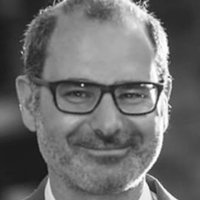
Davide Gabellini
IRCCS San Raffaele Hospital
Milan, Italy
 Davide Gabellini graduated in Biological Sciences at the University of Pavia, where he also obtained his PhD in Genetics and Molecular Biology.
After a postdoctoral research experience in the USA, at the University of Massachusetts Medical School, he returned to Italy becoming first an Assistant and subsequently a Senior Dulbecco Telethon Institute Scientist at the IRCCS San Raffaele Hospital in Milan. There, he also received an ERC Starting Grant.
Davide Gabellini graduated in Biological Sciences at the University of Pavia, where he also obtained his PhD in Genetics and Molecular Biology.
After a postdoctoral research experience in the USA, at the University of Massachusetts Medical School, he returned to Italy becoming first an Assistant and subsequently a Senior Dulbecco Telethon Institute Scientist at the IRCCS San Raffaele Hospital in Milan. There, he also received an ERC Starting Grant.
Currently, he is Head of the San Raffaele Gene Expression and Muscular Dystrophy Unit, part of the Division of Regenerative Medicine, Stem Cells and Gene Therapy.
The Gabellini’s group studies the epigenetic mechanisms underlying physiological and pathological muscle differentiation using facioscapulohumeral muscular dystrophy (FSHD) as a paradigm. Through this work, they identified novel epigenetic regulators of muscle development and muscle regeneration. They also elucidated a requirement for the Polycomb group of epigenetic repressors in maintaining silencing of the FSHD locus in healthy subjects and demonstrated for the first time a key role for an activatory lncRNA in a human genetic disease. This work allowed the identification of possible therapeutic approaches that are tested in cellular and animal model of the disease.
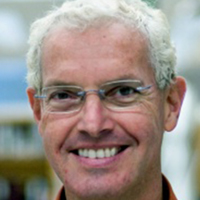
Tomas Kirchhausen
Harvard Medical School
Boston, MA, USA
 I received my Ph.D. in Biophysics from the Instituto Venezolano de Investigaciones Cientificas and my post-doctoral training at Harvard where I am now Professor of Cell Biology. Our research focuses on the processes that mediate and regulate the movement of membrane proteins throughout cells. In particular our studies have help define molecular mechanisms that underlie the cell's sorting machineries mediated by the clathrin pathway, the principal route responsible for receptor-mediated endocytosis and for secretion, a route critical for reuptake of membrane at synapses, and a mode of entry usurped by many viral and bacterial pathogens. These biological phenomena have importance for the understanding of such diseases as cancer, viral infection and pathogen invasion, Alzheimer's, as well as other neurological diseases. We also study how during cell division, cells control their size and organelle architecture. Our work has been characterized by use of emerging technologies -- from the early days of molecular cloning to contemporary live-cell imaging. We use the tools of x-ray crystallography, NMR, electron cryomicroscopy, and single-molecule biophysics to create a "molecular movie" of clathrin-mediated endocytosis, and in this way relate these molecular events to functional properties of the surfaces of living cells. We have helped defined the structure, interactions, and assembly-disassembly mechanisms of clathrin and many of its associated proteins, through studies extending over three decades, including the first X-ray crystal structure determination of clathrin and the AP-1 endosomal clathrin adaptor, and the first high resolution cryo-electron microscopy of a complete clathrin coat. We also use frontier optical-imaging modalities including super-resolution total internal reflection fluorescence microscopy and lattice light sheet fluorescence microscopy with single molecule sensitivity. Our fluorescent high resolution imaging microscopy techniques are geared to gather in 3D and real time, quantitative, “single-molecule” and "single-object" data to examine cellular membrane remodeling processes from in vitro reconstituted systems or from living cells. Focusing on clathrin-coated pits and coated vesicles, for example, we tracked them while they are assembling, recruiting cargo, membrane scission, budding and uncoating. The fluorescent probes include clathrin, AP-2, auxilin, dynamin and other molecules expressed in gene-edited cells as well as fluorescently tagged cargo. With these type of studies we integrate molecular snapshots obtained at high resolution with real time in vitro and live-cell processes, to generate ‘molecular movies' aimed towards obtaining new frameworks for analyzing some of the molecular contacts and switches that participate in the regulation, availability, and intracellular traffic of the many molecules involved in signal transduction, immune responsiveness, lipid homeostasis, cell-cell recognition and organelle biogenesis.
I received my Ph.D. in Biophysics from the Instituto Venezolano de Investigaciones Cientificas and my post-doctoral training at Harvard where I am now Professor of Cell Biology. Our research focuses on the processes that mediate and regulate the movement of membrane proteins throughout cells. In particular our studies have help define molecular mechanisms that underlie the cell's sorting machineries mediated by the clathrin pathway, the principal route responsible for receptor-mediated endocytosis and for secretion, a route critical for reuptake of membrane at synapses, and a mode of entry usurped by many viral and bacterial pathogens. These biological phenomena have importance for the understanding of such diseases as cancer, viral infection and pathogen invasion, Alzheimer's, as well as other neurological diseases. We also study how during cell division, cells control their size and organelle architecture. Our work has been characterized by use of emerging technologies -- from the early days of molecular cloning to contemporary live-cell imaging. We use the tools of x-ray crystallography, NMR, electron cryomicroscopy, and single-molecule biophysics to create a "molecular movie" of clathrin-mediated endocytosis, and in this way relate these molecular events to functional properties of the surfaces of living cells. We have helped defined the structure, interactions, and assembly-disassembly mechanisms of clathrin and many of its associated proteins, through studies extending over three decades, including the first X-ray crystal structure determination of clathrin and the AP-1 endosomal clathrin adaptor, and the first high resolution cryo-electron microscopy of a complete clathrin coat. We also use frontier optical-imaging modalities including super-resolution total internal reflection fluorescence microscopy and lattice light sheet fluorescence microscopy with single molecule sensitivity. Our fluorescent high resolution imaging microscopy techniques are geared to gather in 3D and real time, quantitative, “single-molecule” and "single-object" data to examine cellular membrane remodeling processes from in vitro reconstituted systems or from living cells. Focusing on clathrin-coated pits and coated vesicles, for example, we tracked them while they are assembling, recruiting cargo, membrane scission, budding and uncoating. The fluorescent probes include clathrin, AP-2, auxilin, dynamin and other molecules expressed in gene-edited cells as well as fluorescently tagged cargo. With these type of studies we integrate molecular snapshots obtained at high resolution with real time in vitro and live-cell processes, to generate ‘molecular movies' aimed towards obtaining new frameworks for analyzing some of the molecular contacts and switches that participate in the regulation, availability, and intracellular traffic of the many molecules involved in signal transduction, immune responsiveness, lipid homeostasis, cell-cell recognition and organelle biogenesis.
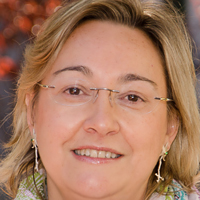
Angela Nieto
Instituto de Neurociencias (CSIC-UMH)
Alicante, Spain
 Angela Nieto received her PhD in 1987 (Universidad Autónoma, UAM, Madrid) after working on protein-nucleic acid interactions in nucleosomes and ribosomes. In 1988, she moved to the Instituto de Investigaciones Biomédicas (CSIC-UAM) also in Madrid to study programmed cell death in lymphocytes. In 1989 she joined David Wilkinson´s lab at the National Institute for Medical Research in London where she isolated a number of genes involved in the morphogenesis of the nervous system. In 1993, after obtaining a position of Staff Scientist she moved to the Cajal Institute in Madrid. From then on, she has led a research group interested in studying cell movements and plasticity. In particular, her group has studied the epithelial to mesenchymal transition (EMT) in development and disease, and her main contribution has been the impact that the reactivation of this developmental program has in adult disease, including tumor progression, fibrosis and bone growth and mineralization. Currently, she is member of several Editorial Boards (i.e. EMBO J, EMBO reports; Curr Op in Genet & Dev, among others) and serves in the advisory boards of several Spanish and European Research Institutes and University Departments. She is the Spanish scientific delegate for EMBL-EMBC from 2010, was elected EMBO member in 2000 and Member of the Academy of Europe in 2009.
Angela Nieto received her PhD in 1987 (Universidad Autónoma, UAM, Madrid) after working on protein-nucleic acid interactions in nucleosomes and ribosomes. In 1988, she moved to the Instituto de Investigaciones Biomédicas (CSIC-UAM) also in Madrid to study programmed cell death in lymphocytes. In 1989 she joined David Wilkinson´s lab at the National Institute for Medical Research in London where she isolated a number of genes involved in the morphogenesis of the nervous system. In 1993, after obtaining a position of Staff Scientist she moved to the Cajal Institute in Madrid. From then on, she has led a research group interested in studying cell movements and plasticity. In particular, her group has studied the epithelial to mesenchymal transition (EMT) in development and disease, and her main contribution has been the impact that the reactivation of this developmental program has in adult disease, including tumor progression, fibrosis and bone growth and mineralization. Currently, she is member of several Editorial Boards (i.e. EMBO J, EMBO reports; Curr Op in Genet & Dev, among others) and serves in the advisory boards of several Spanish and European Research Institutes and University Departments. She is the Spanish scientific delegate for EMBL-EMBC from 2010, was elected EMBO member in 2000 and Member of the Academy of Europe in 2009.
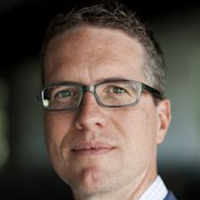
Jeroen Pasterkamp
Dept of Translational Neuroscience, UMC Utrecht
Utrecht, Netherlands
 In 1996, Jeroen Pasterkamp obtained a MSc degree in Medical Biology from the Vrije Universiteit in Amsterdam. Subsequently, he obtained a PhD degree in 2000 in Neuroscience while working under the supervision of Joost Verhaagen en Dick Swaab (Netherlands Institute for Neuroscience, Amsterdam). His PhD work focused on the role of repulsive guidance cues in axon regeneration. His postdoctoral work was performed in the laboratory of Alex Kolodkin (Johns Hopkins University School of Medicine, Baltimore, USA) and financially supported by NWO Talent and HFSP fellowships. These studies focused on novel functions and the downstream signaling pathways of axon guidance cues. In 2004, Jeroen moved to the Brain Center Rudolf Magnus (Department of Translational Neuroscience, UMC Utrecht, Utrecht, The Netherlands) to start his own lab focused on molecular mechanisms underlying Neural Circuit Development and Disease (www.jeroenpasterkamplab.com). Currently, he is professor of Translational Neuroscience and Chair of the Brain Center Rudolf Magnus. His lab focuses on the role of axon guidance cues, non-coding RNAs and genetic factors in epilepsy and ALS using IPSC/brain organoids, genetic mouse models, molecular cell biology, and 3D microscopy. He participates in different European consortia and is a recipient of TOP, VENI, VIDI and VICI grants from the Netherlands Organization for Scientific Research. He regularly organizes international meetings, including KNAW and EMBO symposia.
In 1996, Jeroen Pasterkamp obtained a MSc degree in Medical Biology from the Vrije Universiteit in Amsterdam. Subsequently, he obtained a PhD degree in 2000 in Neuroscience while working under the supervision of Joost Verhaagen en Dick Swaab (Netherlands Institute for Neuroscience, Amsterdam). His PhD work focused on the role of repulsive guidance cues in axon regeneration. His postdoctoral work was performed in the laboratory of Alex Kolodkin (Johns Hopkins University School of Medicine, Baltimore, USA) and financially supported by NWO Talent and HFSP fellowships. These studies focused on novel functions and the downstream signaling pathways of axon guidance cues. In 2004, Jeroen moved to the Brain Center Rudolf Magnus (Department of Translational Neuroscience, UMC Utrecht, Utrecht, The Netherlands) to start his own lab focused on molecular mechanisms underlying Neural Circuit Development and Disease (www.jeroenpasterkamplab.com). Currently, he is professor of Translational Neuroscience and Chair of the Brain Center Rudolf Magnus. His lab focuses on the role of axon guidance cues, non-coding RNAs and genetic factors in epilepsy and ALS using IPSC/brain organoids, genetic mouse models, molecular cell biology, and 3D microscopy. He participates in different European consortia and is a recipient of TOP, VENI, VIDI and VICI grants from the Netherlands Organization for Scientific Research. He regularly organizes international meetings, including KNAW and EMBO symposia.
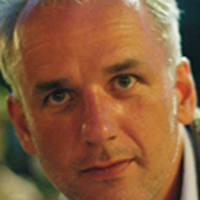
Nikolaus Rajewsky
Max Delbrück Center for Molecular Medicine in the Helmholtz Association (MDC)
Berlin, Germany
 Scientific Director of the Berlin Institute for Medical Systems Biology, Max Delbrück Center for Molecular Medicine in the Helmholtz Association, Berlin, Germany.
Scientific Director of the Berlin Institute for Medical Systems Biology, Max Delbrück Center for Molecular Medicine in the Helmholtz Association, Berlin, Germany.
Nikolaus Rajewsky earned his Ph.D. in Theoretical Physics at the University of Cologne in 1997. After postdoctoral studies at Rutgers University and at Rockefeller University, he spent three years as an “Assistant Professor for Biology and Mathematics” in the Department of Biology at New York University (2003-2006). In 2006 he became a full Professor at the Charité and the Max Delbrück Center for Molecular Medicine in Berlin. He conceived, founded and directs the “Berlin Institute for Medical Systems Biology” (BIMSB). BIMSB is a new branch of the MDC with funding for a few hundred scientists and a new building in downtown Berlin.
Nikolaus Rajewsky uses both computational and experimental molecular biology methods to study gene regulation in animals. A focus of his work is on the function and mechanisms of small non-coding RNAs and RNA binding proteins in development and stem cells. Nikolaus’ research has been cited over 25,000 times and has been featured in numerous high-ranking scientific journals and in the press. His awards include: IUBMB medal, FEBS award, “Berliner Wissenschaftspreis”, EMBO elected membership, and in 2012 the highest award for research in Germany, the “Leibniz Preis” of the DFG. From 2008 to 2013 he was also a “Global Distinguished Professor of Biology at New York University”. In 2014 he received an honorary Ph.D. in Human Biology and Medical Genetics by “La Sapienza” University of Rome, Italy.

Giorgio Scita
FIRC Institute of Molecular Oncology (IFOM)
Milan, Italy
 Giorgio Scita obtained his Ph.D. in Food Chemistry and Technology at the University of Parma, Italy. He received his first postdoctoral training at the University of California, Berkeley working on Vitamin A metabolism and Next, he moved to the National Cancer Institute (NCI) of the National Institutes of Health (NIH), where he worked on the integration between retinoic acid receptor and Ras signalling pathways, under the leadership of Dr. S. Yuspa and L. De Luca. In 1995, he returned to Italy, to the European Institute of Oncology (IEO), Milan where he became interested in EGFR signalling. In 2001, he became Principal Investigator at the IFOM Foundation, the FIRC Institute of Molecular Oncology, Milan. In 2006, he was appointed associate professor of General Pathology at the School of Medicine of the University of Milan. His primary research interest has been on dissecting basic mechanisms of cell migration focusing on signalling leading to spatial and temporal regulation of actin dynamics: the powerhouse for cell motility. More recently, he has been investigating the impact of endocytic networks on the biomechanics of collective cell migration, tumor plasticity and dissemination.
Giorgio Scita obtained his Ph.D. in Food Chemistry and Technology at the University of Parma, Italy. He received his first postdoctoral training at the University of California, Berkeley working on Vitamin A metabolism and Next, he moved to the National Cancer Institute (NCI) of the National Institutes of Health (NIH), where he worked on the integration between retinoic acid receptor and Ras signalling pathways, under the leadership of Dr. S. Yuspa and L. De Luca. In 1995, he returned to Italy, to the European Institute of Oncology (IEO), Milan where he became interested in EGFR signalling. In 2001, he became Principal Investigator at the IFOM Foundation, the FIRC Institute of Molecular Oncology, Milan. In 2006, he was appointed associate professor of General Pathology at the School of Medicine of the University of Milan. His primary research interest has been on dissecting basic mechanisms of cell migration focusing on signalling leading to spatial and temporal regulation of actin dynamics: the powerhouse for cell motility. More recently, he has been investigating the impact of endocytic networks on the biomechanics of collective cell migration, tumor plasticity and dissemination.
Scientific productivity: Scita has authored more than 100 publications, which include more than 85 original articles and 10 invited reviews in refereed journals. The average impact factor of these publications is slightly above 10. H index >46.
He is ERC awardee (2011) and EMBO member since 2014.

Peter Walter
University of California San Francisco
San Francisco, CA, USA
 Peter Walter is currently a Distinguished Professor of Biochemistry and Biophysics at UCSF and an HHMI Investigator. He graduated from the Free University of Berlin in 1976, and received his Masters of Science in Organic Chemistry from Vanderbilt University in 1977. In 1981 he obtained his PhD in Biochemistry at The Rockefeller University. In 1983, Peter joined the faculty of the Department of Biochemistry and Biophysics at the University of California, San Francisco where he served as Department Chair from 2001 until 2008. Peter’s awards include the Eli Lilly Award, the Passano Award, the Wiley Prize, the Stein & Moore Award, the Gairdner Award, the E.B. Wilson Medal, the Otto Warburg Medal, the Jung Prize, the 2012 Ehrlich and Darmstaedter Prize, the 2014 Shaw Prize, the 2014 Lasker Award and the 2015 Vilcek Prize.
Peter Walter is currently a Distinguished Professor of Biochemistry and Biophysics at UCSF and an HHMI Investigator. He graduated from the Free University of Berlin in 1976, and received his Masters of Science in Organic Chemistry from Vanderbilt University in 1977. In 1981 he obtained his PhD in Biochemistry at The Rockefeller University. In 1983, Peter joined the faculty of the Department of Biochemistry and Biophysics at the University of California, San Francisco where he served as Department Chair from 2001 until 2008. Peter’s awards include the Eli Lilly Award, the Passano Award, the Wiley Prize, the Stein & Moore Award, the Gairdner Award, the E.B. Wilson Medal, the Otto Warburg Medal, the Jung Prize, the 2012 Ehrlich and Darmstaedter Prize, the 2014 Shaw Prize, the 2014 Lasker Award and the 2015 Vilcek Prize.